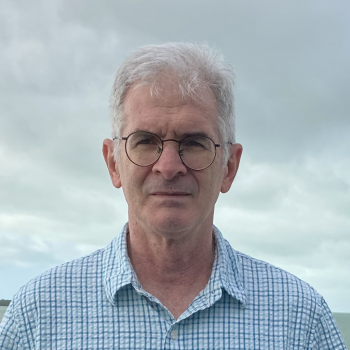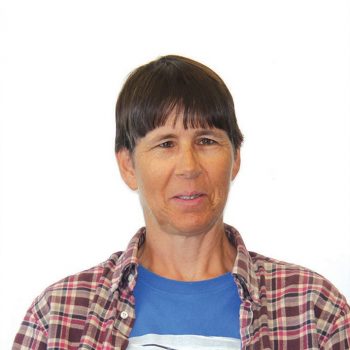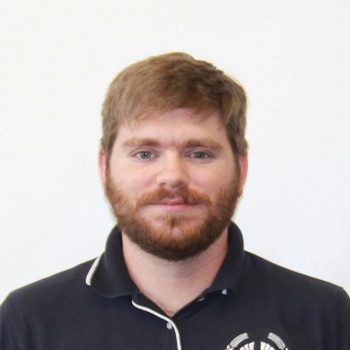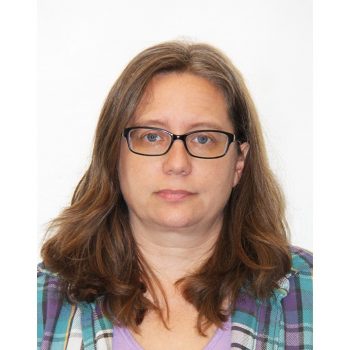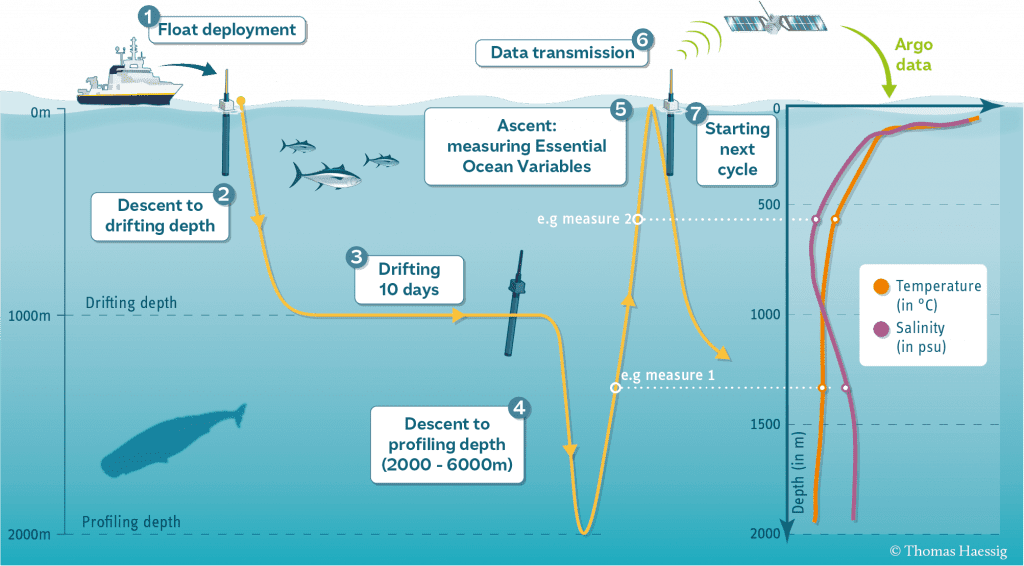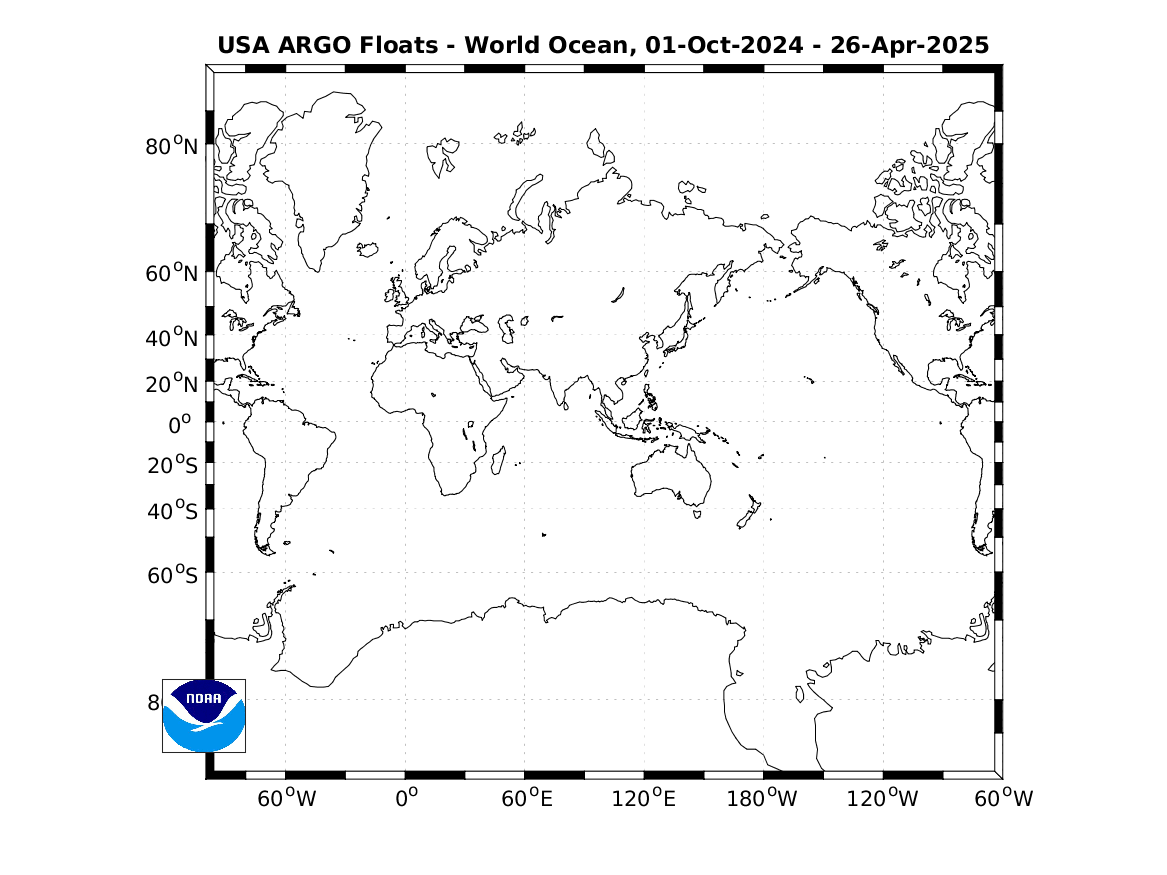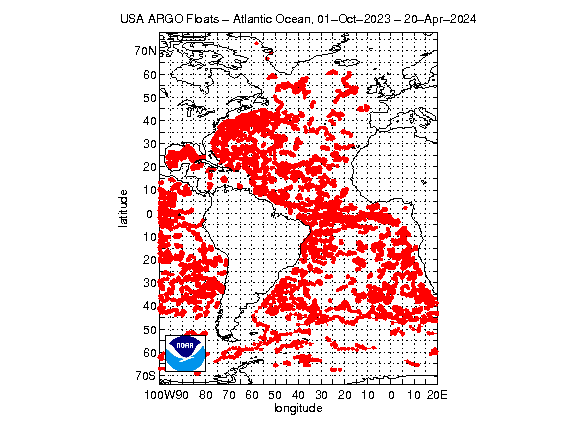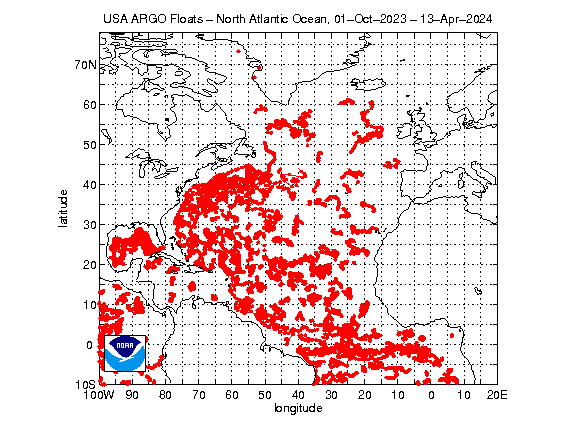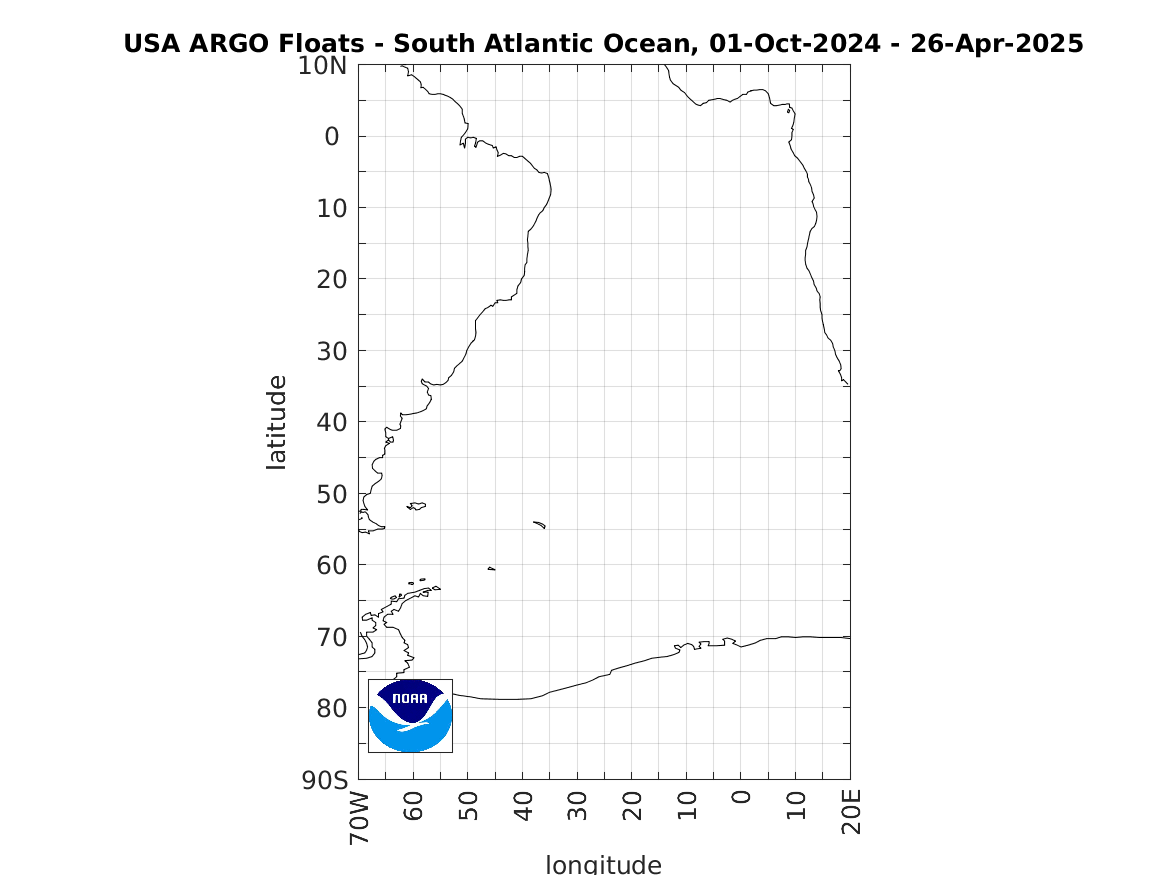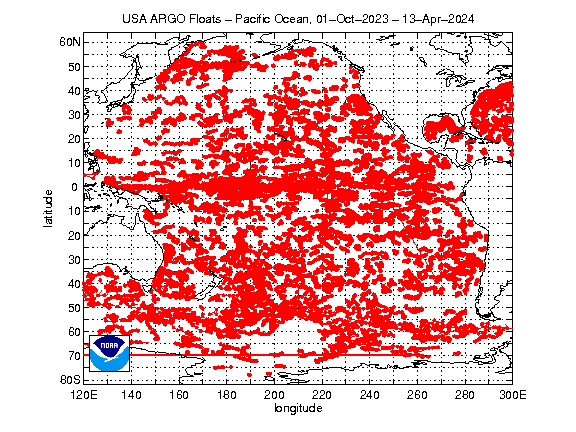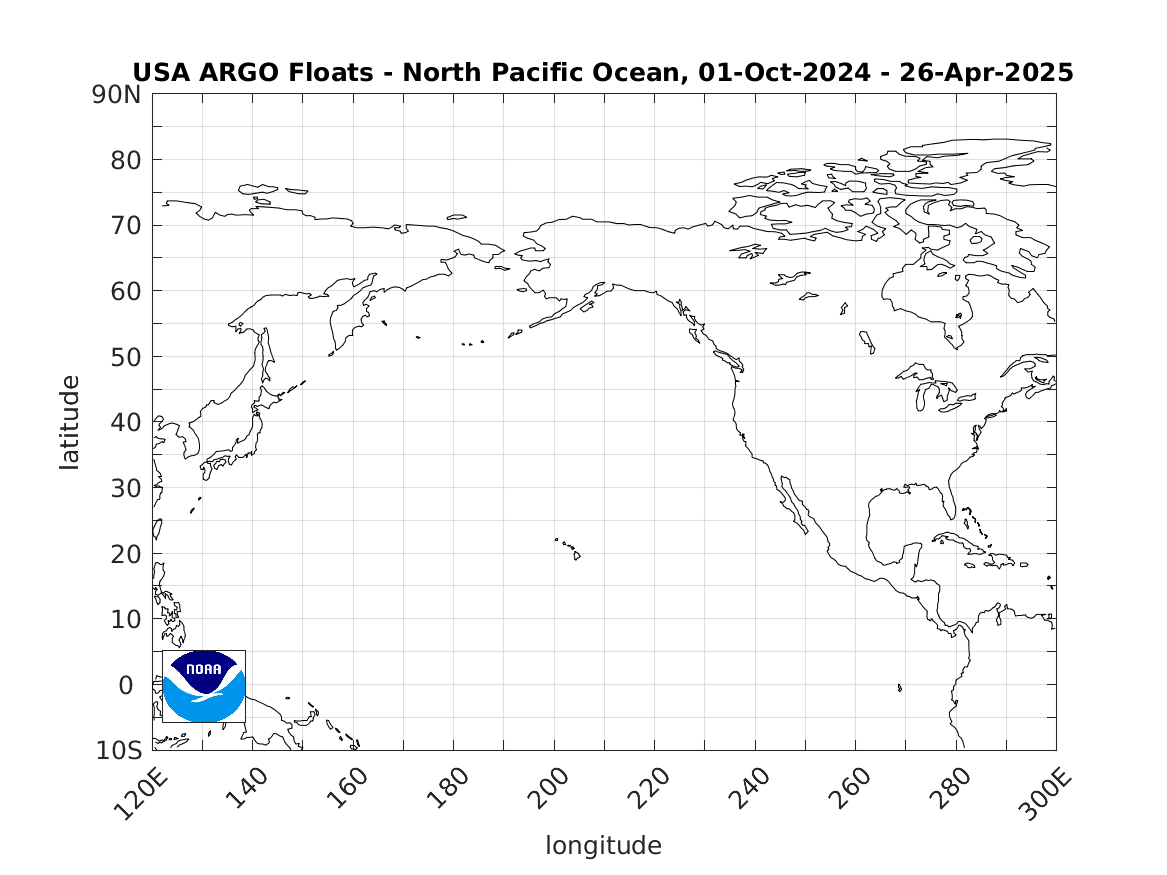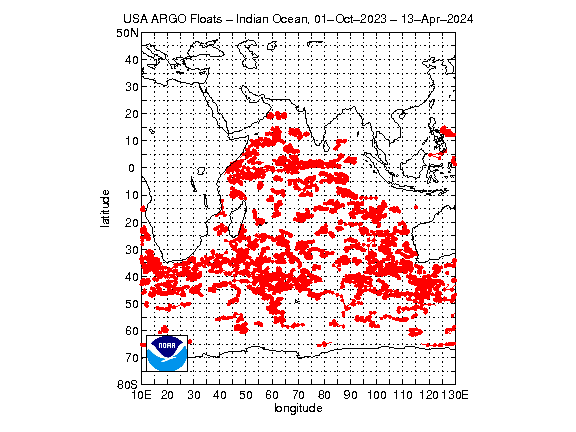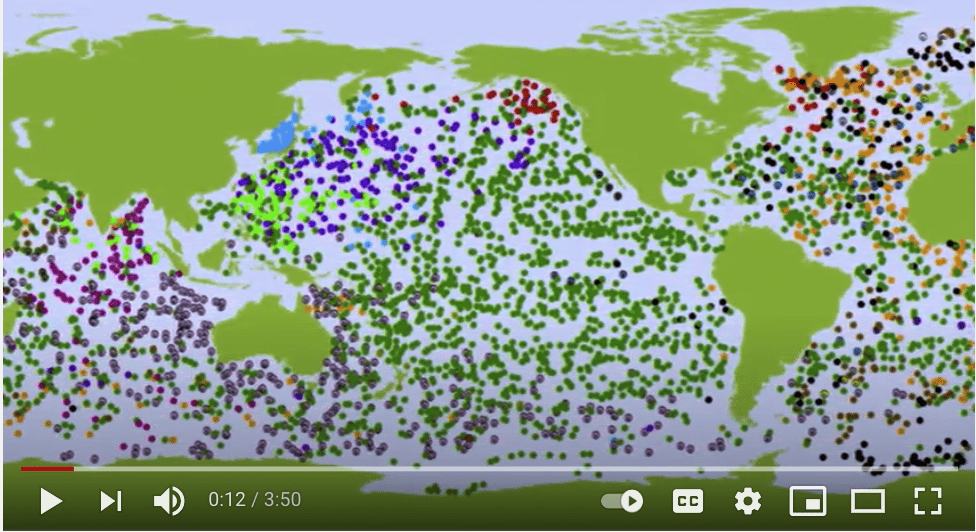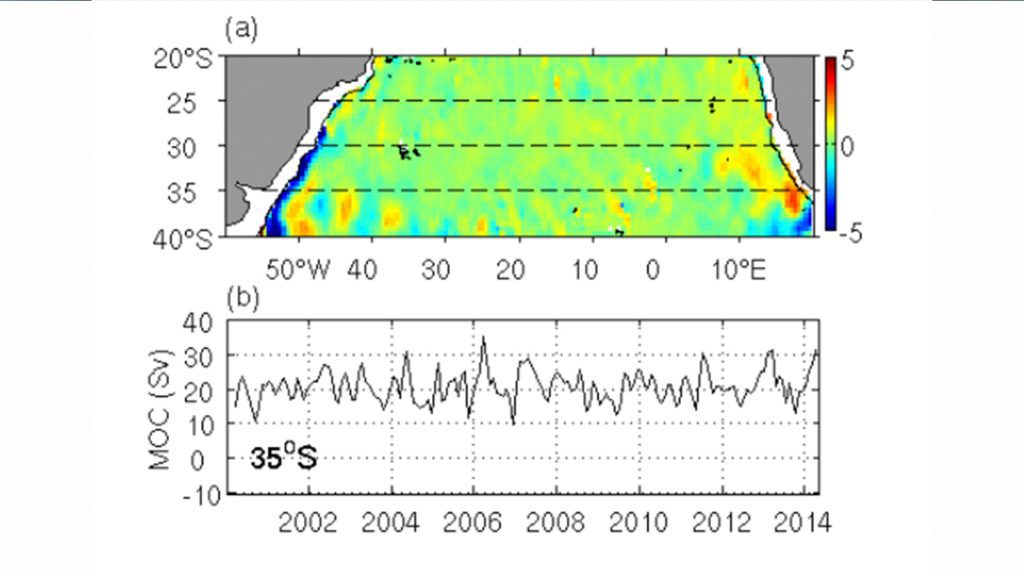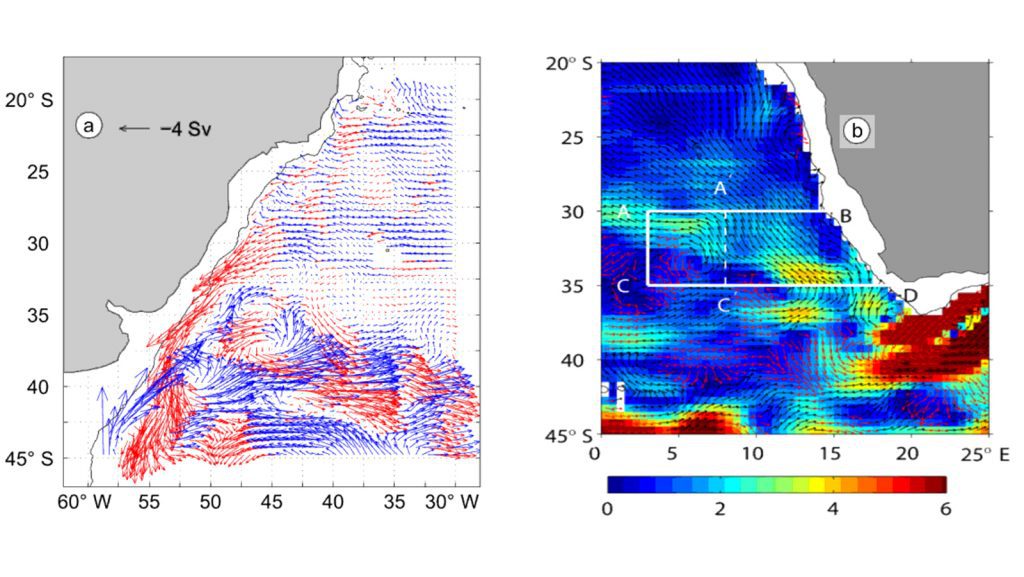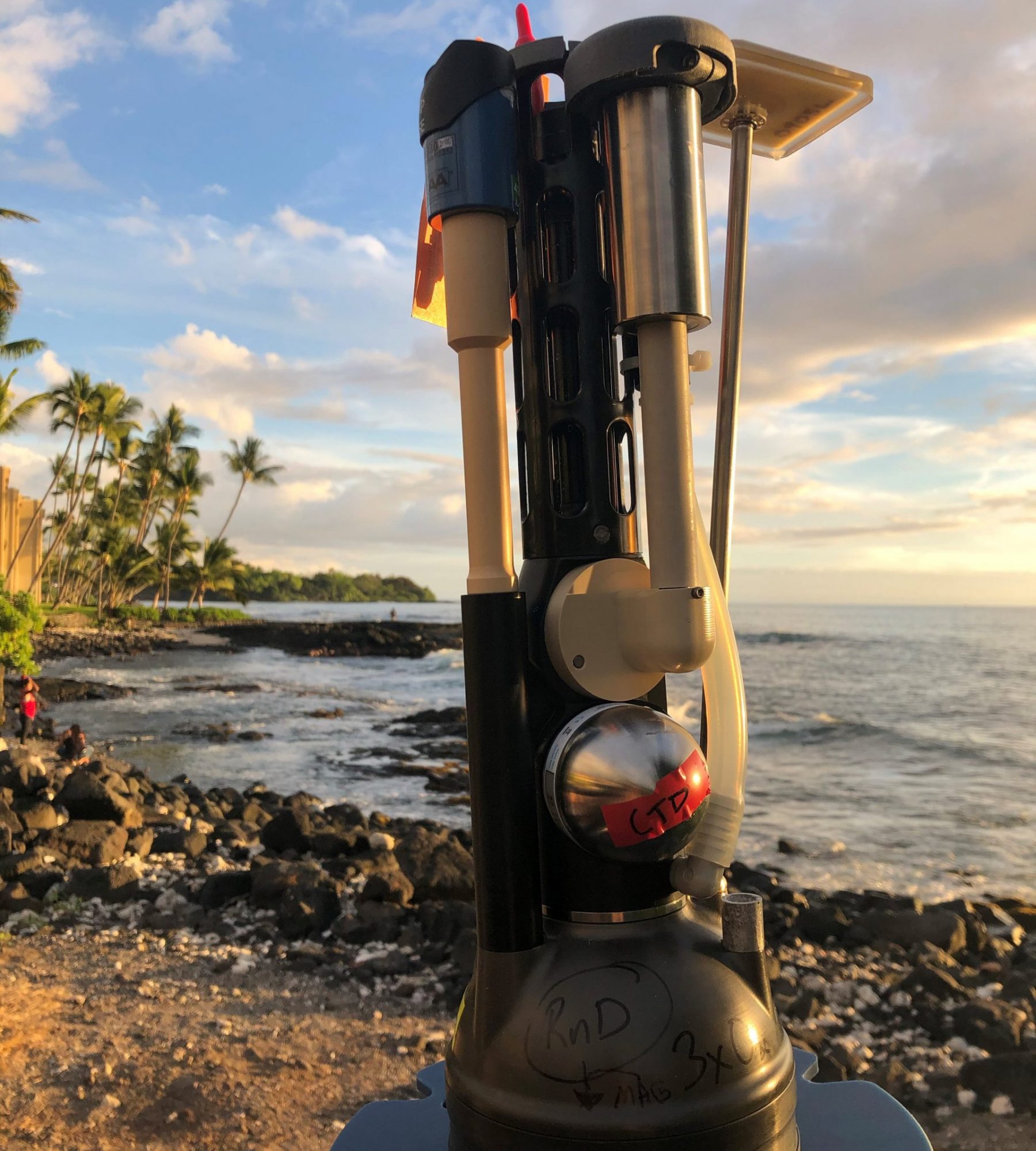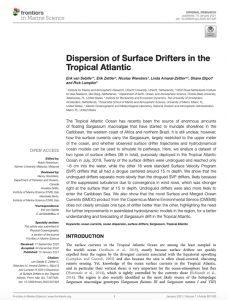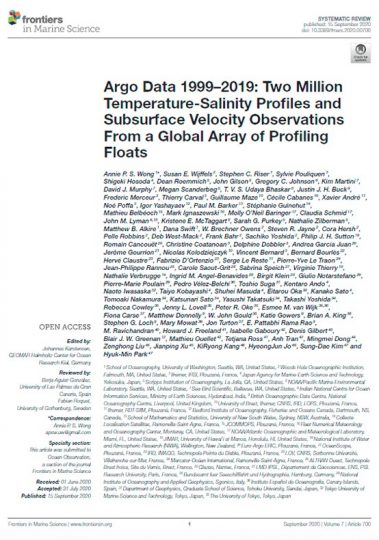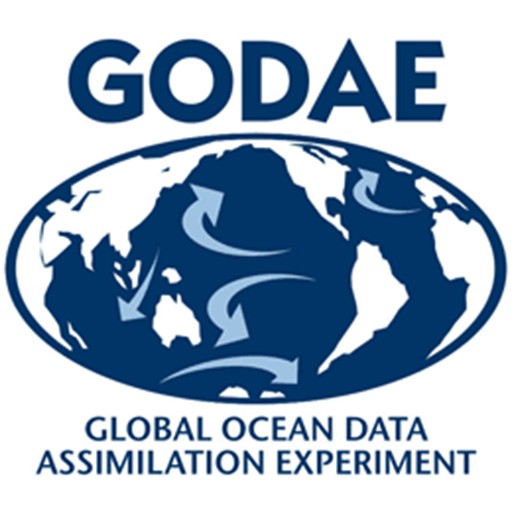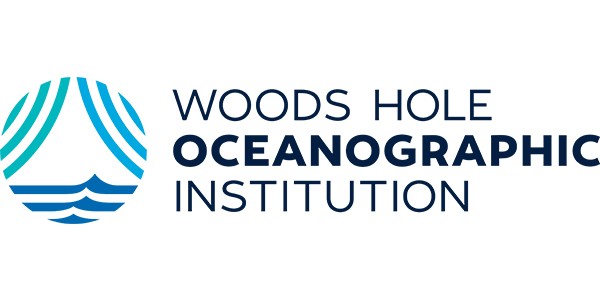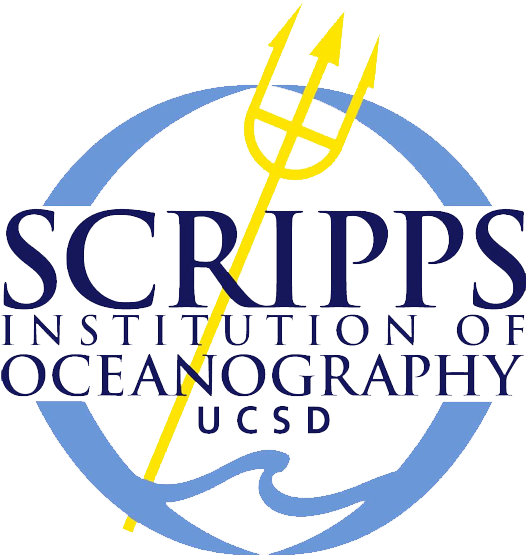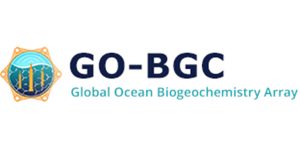Argo Program
An Array of Profiling Floats Observing the Ocean in Real-Time
Who We Are
What We Do
Argo is an international program that collects information from inside the ocean using free drifting profiling floats. These floats drift with the ocean currents and move up and down between the surface and a mid-water level. The floats are distributed over the global ocean to measure temperature and salinity in the upper 2,000 meters. They annually provide 100,000 temperature/ salinity profiles and reference velocity measurements per year. Argo data are used to initialize ocean and coupled (i.e., ocean-atmosphere) forecast models and for dynamical model testing. This broad-scale global array of temperature/salinity profiling floats is a major component of the global ocean observing system.
Our Objectives
1. Provide a quantitative description of the evolving state of the upper ocean by collecting temperature and salinity profiles from the surface to 2,000 meters depth.
2. Improve weather and climate forecasts through the assimilation of Argo data in ocean and coupled (ocean and atmosphere) forecast models.
| Molly Baringer, Ph.D
Co-Principal Investigator
| Jay Harris
IT Specialist
| Edward Ryan
Programmer
| Claudia Schmid
Co-Principal Investigator of US Argo and Manager of US Argo Data Assembly Center
| Jaya Nair
Data Processing, Quality Control, and Web Pages
| Zach Barton
Ship Logistics
| Jennifer McWhorter
Biogeochemical-Argo Researcher
| Jodi Brewster
Data Processing, Quality Control and BGC Argo
| Brandon Navarro
Software developer, Data Processing, Quality Control, and Web Graphics
| Cedrick Estelhomme
Data Processing and Quality Control
| Emily Osborne
Co-Principal Investigator of Biogeochemical-Argo
Read More News
Research Findings & Key Impacts
From its inception, Argo has made its data freely available to the operational and research communities, as well as the general public. This open-data policy, coupled with the exceptional data coverage, has driven an explosion in ocean and climate research with over 4,000 papers and 250 PhD theses using Argo data.
Source: Argo Data 1999–2019: Two Million Temperature-Salinity Profiles and Subsurface Velocity Observations From a Global Array of Profiling Floats (here)
Argo data have shown the upper 2,000 meters has captured roughly ~90% of the anthropogenic change in ocean heat content over the last two decades. Temperatures in the upper ~600 m fluctuate with shorter-term climate events like El Niño-Southern Oscillation, while deeper waters display a more consistent warming trend. The 700–2,000 m ocean layer accounts for approximately one-third of the warming of the 0–2000 m layer of the World Ocean.
Source: World ocean heat content and thermosteric sea level change (0–2000 m), 1955–2010 (here)
Background
What is Argo?
Argo, the broad-scale global array of temperature/salinity profiling floats, is a major component of the ocean observing system. The Argo program is an international program that began in 1999 to measure temperature and salinty of the upper 2,000 meters of the global ocean. Conceptually, Argo builds on the existing upper-ocean thermal networks, extending their spatial and temporal coverage, depth range and accuracy, and enhancing them through the addition of salinity and velocity measurements. The name Argo was chosen because of the program’s partnership with the Jason earth observing satellites that measure the shape of the ocean surface. In Greek mythology Jason sailed on his ship the Argo.
How does it work?
The standard Argo float mission is known as “park-and-profile.” The float descends to a target depth of 1,000 meters to “park” and drift with the ocean currents. Every 10 days the floats descend to 2,000 meters and then collect a vertical profile of temperature and salinity during ascent to the surface. When a float surfaces, the data are transmitted and the float’s position is determined either by GPS or by Système Argos (France).
Motivation for the Argo Program
The data that Argo collects describe the temperature and salinity of the water, and some of the floats measure other properties that describe the biology/chemistry of the ocean. The primary reason for collecting these data is to help us understand the ocean’s role in earth’s climate to make improved estimates of how it will change in the future. Argo float measurements compared with Jason satellite observations continue to provide new insights into how the ocean “works” that can be used to improve climate models.
At present (2021) Argo collects 12,000 data profiles every month (400 per day). Researchers plan to continue collecting Argo data for as long as those data remain a vital tool for a wide range of ocean applications, including the detection of climate change.
Maintaining the Global Array
Deployments of Argo floats began in 1999, and the 3,000-float goal was reached in November 2007. Argo collected its one-millionth profile in October 2012 and its two-millionth profile in September 2018. The Argo Information Centre (AIC) has created an interactive map of the Argo float array shown below. This map gives you the ability to zoom, scroll, or drag the map, and click on a float to get its ID number.
To view the data for a particular float click on the float and then choose details. The details will display the most recent date the data was collected.
Argo 6-month float trajectories can be found below.
The Argo Program at AOML
AOML is the data processing center for all US Argo data. Argo floats are deployed in the US, the data are collected via satellite, processed and quality controlled by AOML, and then sent to the US Global Data Assembly Center (GDAC) for distribution to the user community. AOML is a full processing center for Core and Deep Argo floats, and is currently setting up a Biogeochemical (BGC) Argo processing system. The data are processed and distributed in real-time, freely available to everyone, and can be used by modelers, scientists, or anyone else who wants to use them. The data reach operational ocean and climate forecast/analysis centers via the Global Telecommunications System (GTS) and the Global Argo Data Assembly Centers (GDACs). These data are used in climate and oceanographic research. Our lab also works to deploy Argo floats through NOAA’s Ship of Opportunity Program (SOOP) and through research cruises.
Research at AOML
Float Programs Under Argo
Core Argo
Core Argo is the temperature / salinity/ pressure operational mission that was the original goal the Argo Program. The basic mission of Argo is to track where heat and salinity are changing across the global ocean, down to a depth of 2,000 meters. The initial goal of the program called for the deployment of 3,000 profiling floats in a 3◦ x 3◦ array in the open ocean between 60◦N and 60◦S. This goal was met in November of 2007. The Argo Program has collected, processed, and distributed over two million vertical profiles of temperature and salinity from the upper ocean in the past two decades. The new array design, Argo2020, is global, full depth and multidisciplinary, and aims to contain 4,000 floats. The picture above shows an example of one core Argo float model. There are many different types of core Argo floats.
Deep Argo
Deep Argo aims to sample temperature and salinity over the full ocean depth up to 6,000 meters. The strength and variability of the large-scale ocean circulation that extends from the sea surface to the ocean bottom plays a significant role in the uptake and transport of heat and freshwater and the melting of sea ice. Since the inception of the Argo program, profiling floats have been limited to the top half of the sea (0-2,000m), and the accuracy of sensors has been similarly limited to upper ocean levels of temperature and salinity variability. The new generation of autonomous Deep Argo floats will sample the full ocean volume. This new array design, Argo2020, aims to deploy 1,200 Deep Argo floats. The picture above shows an example of one deep Argo float model. There are two deep Argo float models that dive to 6,000m depth and two models that dive to 4,000m depth.
BGC Argo
BGC-Argo aims at developing a global network of biogeochemical sensors on Argo profiling floats. Each float carries sensors to measure six core BGC-Argo variables: chlorophyll-a fluorescence, oxygen, nitrate, pH, and suspended particles, in addition to temperature, salinity, and pressure. These variables are the fundamental measurements that are required to address significant scientific and societal ocean/climate-related issues. The BGC-Argo network represents the most promising strategy for collecting temporally and spatially resolved observations of biogeochemical properties throughout the upper 2000 m of the ocean. The Argo2020 array design aims to contain 1,000 BGC-Argo. The picture above shows an example of one BG- Argo float model. Several core Argo floats also have BGC versions which carry dissolved oxygen sensors.
We are strong because of our community.
The Ship of Opportunity Program.
NOAA’s Ship of Oppurtunity Program (SOOP) aids in the worldwide effort to deploy Argo floats.
What is SOOP?
The Ship of Opportunity Program is a global partnership between scientific institutions and the maritime industry. NOAA, specifically AOML, manages the US SOOP. AOML works to recruit ships to assist scientists in collecting oceanographic data from the global ocean.
To learn more about the Ship of Opportunity Program, read its brochure.
Biogeochemical-Argo at AOML
The Biogeochemical Argo (BGC-Argo) float array is a part of the internationally coordinated Argo network of robotic ocean profiling floats. BGC-Argo floats carry biological and chemical sensors that collect high-quality, multi-year ocean datasets from the sea surface to a depth of 2,000 meters. The addition of these sensors are expanding the existing Argo array that monitors ocean temperature and salinity. The growing global array of BGC-Argo floats are revolutionizing our ability to observe ocean biogeochemical cycles and understand ocean carbon uptake, acidification, deoxygenation, and marine ecosystem health.
NOAA’s AOML is deploying BGC-Argo floats in the chronically under-observed open Gulf of Mexico, which is an important US fishery region. These floats will measure temperature, salinity, oxygen, nitrate, pH, chlorophyll-a fluorescence, and suspended particles across the upper 2,000 m of the Gulf water column. An initial array of four BGC-Argo floats will be deployed in 2021 during NOAA’s fourth Gulf of Mexico Ecosystems and Carbon Cruise. Each battery operated BGC-Argo float will return ocean profile data via a satellite network in near-real time every ten days, equating to an estimated 250 total profiles per float over their 6.5 year lifespan. These new in situ observations will support research efforts on ocean acidification, seasonal hypoxia and interactions with freshwater influx, harmful algal bloom initiation, and impacts of extreme weather on ocean biogeochemistry. Our Gulf of Mexico BGC-Argo floats will also provide validation data for regional models and satellite observations of the surface ocean as well as provide critical subsurface ocean data, supplementing scarce and seasonally-biased ship-based Gulf of Mexico observations.
ARGO US Data Assembly Center
AOML acts as the US Data Assembly Center (DAC) for the Argo program. The role of the DAC is to collect and quality control all of the Argo data collected by US scientific and governmental institutions. After the required quality for the data is achieved, it is transmitted to the two global data assembly centers (GDAC) in Brest, France and Monterey, California, who are the only two entities entitled to distributes Argo data to the world. The target is for these “real-time” data to be available within approximately 24 hours of their transmission from the float.
Operational Links for US DAC and US Argo Partners
- Performance Plots
Data Access for US Argo Principal Investigators- ftp://ftp.aoml.noaa.gov/phod/pub/ARGO_FTP/argo
Featured Publication
Argo Bibliography
Driving Innovative Science with Data.
Our Contribution to Global Ocean Observing.
This is a bibliography, originally published on Argo’s UCSD webpage, of papers published on Argo floats and their data. While this is an extensive list, papers in which Argo is a secondary source of data (model outputs and reanalyses, profile collection products, gridded products, etc.) are not all included here. Please send argo@ucsd.edu citations for Argo articles to keep this part of the bibliography updated.
Learn how to properly cite data from the Argo program.
View pdf list by year.
Annual Argo Publications
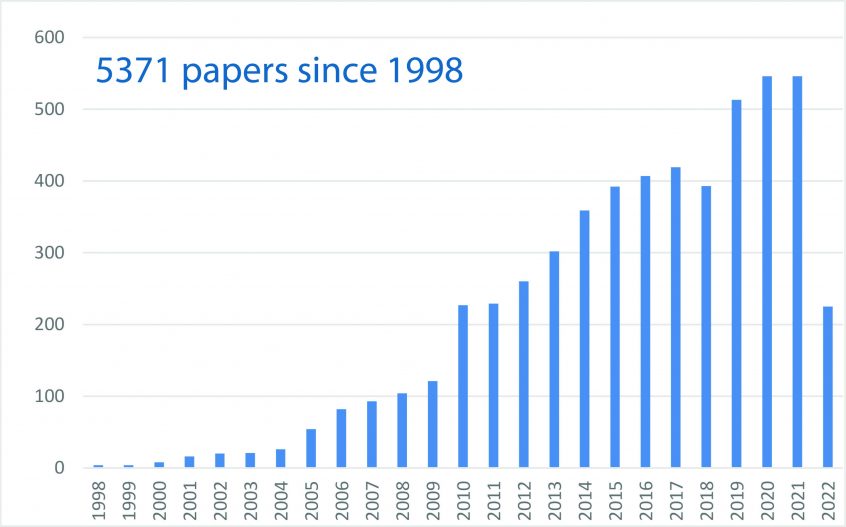
AOML Publications & References
Yang, B. (2021). Seasonal Relationship Between Net Primary and Net Community Production in the Subtropical Gyres: Insights From Satellite and Argo Profiling Float Measurements. Geophysical Research Letters, 48(17), e2021GL093837. (https://doi.org/10.1029/2021GL093837)
Yang, B., Fox, J., Behrenfeld, M.J., Boss, E.S., Haëntjens, N., Halsey, K.H., Emerson, S.R., and Doney, S.C. (2021): In-situ estimates of net primary production in the Western North Atlantic with Argo profiling floats. Journal of Geophysical Research – Biogeosciences, [PDF]
Goes, M., Goni, G.J., Dong, S., Boyer, T., and Baringer, M. (2020): The complementarity value of XBT and Argo observations to monitor ocean boundary currents and meridional heat and volume transports: A case study in the Atlantic Ocean. Journal of Atmospheric and Oceanic Technology, (https://doi.org/10.1175/JTECH-D-20-0027.1).
Wong, A.S.P., Wijffels, S.E., Riser, S.C., Pouliquen, S., Hosoda, S., Roemmich, D., Gilson, J., Johnson, G.C., Martini, K., Murphy, D.J., Scanderbeg, M., Udaya Bhaskar, T.V.S., Buck, J.J.H., Merceur, F., Carval, T., Maze, G., Cabanes, C., Andre, X., Poffa, N., Yashayaev, I., Barker, P.M., Guinehut, S., Belbeoch, M., Ignaszewski, M., Baringer, M.O., Schmid, C., et al. (2020): Argo data 1999-2019: Two million temperature-salinity profiles and subsurface velocity observations from a global array of profiling floats. Frontiers in Marine Science, 7:700 (https://doi.org/10.3389/fmars.2020.00700).
Schmid, C. and Majumder, S. (2018): Transport variability of the Brazil Current from observations and a data assimilation model, Ocean Sci., 14, 417-436, doi:10.5194/os-14-417-2018 [PDF]
Majumder, S. and C. Schmid (2018): A Study of the Variability of the Benguela Current. Ocean sciences, 14, 273-283, doi:10.5194/os-14-273-2018 [PDF]
Schmid, C. and S. Majumder (2017): An Observations and Model-based Analysis of the Temporal Variability of the Brazil Current. Ocean sciences, doi:10.5194/os-2017-59
Majumder, S. and Claudia Schmid (2017): A Study of the Variability of the Benguela Current. Ocean sciences, (https://doi.org/10.5194/os-14-273-2018).
Majumder, S., C. Schmid, G. Halliwell (2016): An Observations and Model Based Analysis of Meridional Transports in the South Atlantic. Journal of Geophysical Research, doi: 10.1002/2016JC011693 [PDF]
Garzoli, S.L., S. Dong, R. Fine, C. Meinen, R.C. Perez, C. Schmid, E. van Sebille, and Q. Yao, 2015: The fate of the Deep Western Boundary Current in the South Atlantic. Deep-Sea Res. I , (doi: 10.1016/j.dsr.2015.05.008) [PDF]
Schmid, C. (2014): Mean vertical and horizontal structure of the subtropical circulation in the South Atlantic from three-dimensional observed velocity fields. Deep Sea Research I, 91 (9), 50-71, doi: 10.1016/j.dsr.2014.04.015 [PDF]
Schmid C., R.L. Molinari, R. Sabina, Y.H. Daneshzadeh, X. Xia, E. Forteza, and H. Yang, 2007: The Real-Time Data Management System for Argo Profiling Float Observations. J. Atmos. Oceanogr. Tech., 24(9):1608-1628. [PDF]
Partners
Sharing Resources Delivers Results.
Expanding Reach Through Partnerships.
34
Countries
Countries are a part of the Argo program and work to deploy argo floats.
15,000+
Argo Floats
The US and its partners have successfully deployed over 15,000 argo floats.
Related Site Links
Together with partners around the world, the Argo program has deployed over 15,000 floats throughout the world’s oceans. While not a complete list of Argo partners, below is a list of key contributors:
International Programs
Key Accomplishments
The Argo program reached its two-decade mark. The program has deployed more than 15,000 floats and collected over 2 million temperature and salinity profiles.
2019
Argo collected its two-millionth profile in September 2018.
September 2018
Argo collected its one-millionth profile in October 2012.
October 2012
The goal of 3,000 active floats was reached in November of 2007.
November 2007
The first Argo float that used Iridium communication was deployed in 2005. Since then, Iridium has become the preferred means of satellite communication for Argo data.
2005
The first argo float was deployed.
1999
The Argo Science Team (later renamed the Argo Steering Team) was constituted at a joint meeting of the CLIVAR UOP and GODAE. The Argo Program was further endorsed as a pilot program by the Global Ocean Observing System (GOOS).
mid 1998
The “Argo Science Team” proposed a design for a global array of autonomous profiling floats to enhance the temperature and salinity measurements of the upper ocean.
1998


